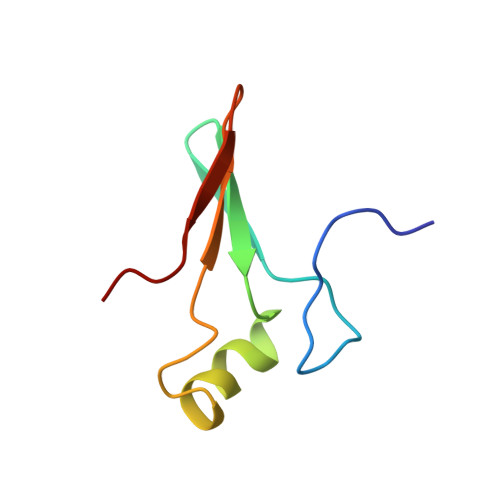Structure and Evolutionary Analysis of a Non-biological ATP-binding Protein
Mansy, S.S., Zhang, J., Kummerle, R., Nilsson, M., Chou, J.J., Szostak, J.W., Chaput, J.C.(2007) J Mol Biol 371: 501-513
- PubMed: 17583732
- DOI: https://doi.org/10.1016/j.jmb.2007.05.062
- Primary Citation of Related Structures:
2P0X - PubMed Abstract:
We present a structural and functional analysis of the evolutionary optimization of a non-biological protein derived from a library of random amino acid sequences. A series of previously described in vitro selection experiments transformed a low-affinity ancestral sequence into a stably folded, high affinity ATP binding protein structure. While the evolutionarily optimized protein differs from its ancestral sequence through the accumulation of 12 amino acid mutations, the means by which those mutations enhance the stability and functionality of the protein were not well understood. We used a combination of mutagenesis, biochemistry, and NMR spectroscopy to investigate the structural and functional significance of each mutation. We solved the three-dimensional structure of the folding optimized protein by solution NMR, which revealed a fourth strand of the beta-sheet of the alpha/beta-fold that was not observed in an earlier crystallographic analysis of a less stable version of the protein. The structural rigidity of the newly identified beta-strand was confirmed by T1, T2, and heteronuclear nuclear Overhauser enhancement (NOE) measurements. Biochemical experiments were used to examine point mutations that revert the optimized protein back to the ancestral residue at each of the 12 sites. A combination of structural and functional data was then used to interpret the significance of each amino acid mutation. The enhanced ATP affinity was largely due to the emergence of a patch of positive charge density on the protein surface, while the increased solubility resulted from several mutations that increased the hydrophilicity of the protein surface, thereby decreasing protein aggregation. One mutation may stabilize the hydrophobic face of the beta-sheet.
Organizational Affiliation:
Howard Hughes Medical Institute, and Department of Molecular Biology, Massachusetts General Hospital, Boston, MA 02114, USA.
















